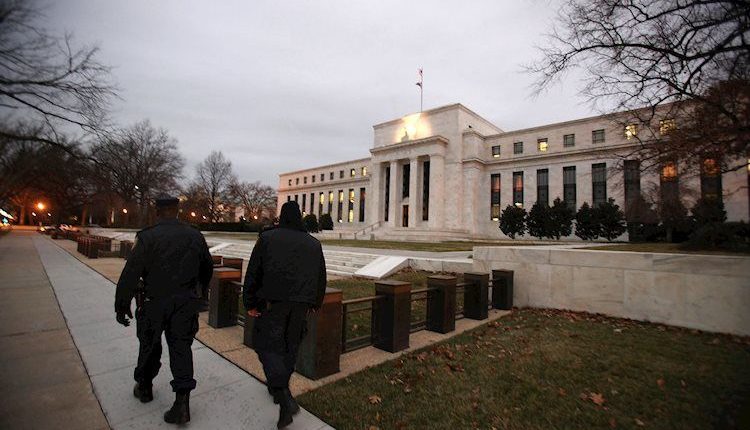- The Minutes of the Fed’s November 7 gathering will come later.
- The Committees’ view of a potential move in December takes centre stage.
- The US Dollar Index remains close to its recent cycle peaks.
The Minutes of the US Federal Reserve’s (Fed) November 6–7 monetary policy meeting will be released later on Wednesday at 19:00 GMT.
The Committee further eased monetary policy with a 25-basis-point rate cut on November 7, following September’s surprising jumbo rate reduction that caught markets off guard.
During that event, Federal Reserve Chair Jerome Powell reportedly avoided providing any clear signals that the central bank might pause its rate-cutting cycle in the near term, despite the widely anticipated 25-basis-point cut. Fed policymakers noted that the labor market had “generally eased,” while inflation appeared to be progressing toward the Fed’s 2% target.
Powell also did not indicate that a pause was under consideration, with analysts interpreting his remarks to suggest that the Fed might aim for rates below 4%—or close to it—before contemplating a pause. Additionally, Powell reiterated that the upcoming election would not influence the Fed’s near-term policy decisions, emphasizing that the central bank does not speculate on how political outcomes could affect its goals.
Since the early November rate decision, US economic data has remained robust, signaling solid fundamentals alongside an uptick in October’s inflation, as tracked by the Consumer Price Index (CPI). However, Powell’s recent comments made it clear that the Fed is not in a rush to cut rates further, aligning with FOMC Governor Michelle Bowman’s view.
Currently, CME Group’s FedWatch Tool estimates the probability of a quarter-point rate cut at the December 18 meeting at nearly 60%, down from around 75% a month ago.
How could the release of the FOMC Minutes impact the US Dollar?
While another 25-basis-point rate cut seems like the logical next step, investors should not dismiss the possibility of a hold—or even a hawkish hold.
The “Red Sweep” accompanying Donald Trump’s election victory in November has revived expectations of US tariffs, looser fiscal policy, and corporate deregulation, all of which could heighten inflationary pressures sooner rather than later. This scenario could challenge the continuation of the Fed’s easing cycle, potentially forcing the central bank to pause or even halt rate cuts. Could rate hikes be back on the table?
Senior Analyst Pablo Piovano at FXStreet notes that “a glance at the technicals on the US Dollar Index (DXY) shows immediate resistance at the 2024 peak of 108.07 (November 22). Surpassing this level should encounter little resistance until the November 2022 high of 113.14 (November 3).”
“On the flip side, occasional bearish moves should find the next support at the critical 200-day SMA at 103.98,” Pablo adds.
Economic Indicator
FOMC Minutes
FOMC stands for The Federal Open Market Committee that organizes 8 meetings in a year and reviews economic and financial conditions, determines the appropriate stance of monetary policy and assesses the risks to its long-run goals of price stability and sustainable economic growth. FOMC Minutes are released by the Board of Governors of the Federal Reserve and are a clear guide to the future US interest rate policy.
Read more.
Next release: Tue Nov 26, 2024 19:00
Frequency: Irregular
Consensus: –
Previous: –
Source: Federal Reserve
Fed FAQs
Monetary policy in the US is shaped by the Federal Reserve (Fed). The Fed has two mandates: to achieve price stability and foster full employment. Its primary tool to achieve these goals is by adjusting interest rates. When prices are rising too quickly and inflation is above the Fed’s 2% target, it raises interest rates, increasing borrowing costs throughout the economy. This results in a stronger US Dollar (USD) as it makes the US a more attractive place for international investors to park their money. When inflation falls below 2% or the Unemployment Rate is too high, the Fed may lower interest rates to encourage borrowing, which weighs on the Greenback.
The Federal Reserve (Fed) holds eight policy meetings a year, where the Federal Open Market Committee (FOMC) assesses economic conditions and makes monetary policy decisions. The FOMC is attended by twelve Fed officials – the seven members of the Board of Governors, the president of the Federal Reserve Bank of New York, and four of the remaining eleven regional Reserve Bank presidents, who serve one-year terms on a rotating basis.
In extreme situations, the Federal Reserve may resort to a policy named Quantitative Easing (QE). QE is the process by which the Fed substantially increases the flow of credit in a stuck financial system. It is a non-standard policy measure used during crises or when inflation is extremely low. It was the Fed’s weapon of choice during the Great Financial Crisis in 2008. It involves the Fed printing more Dollars and using them to buy high grade bonds from financial institutions. QE usually weakens the US Dollar.
Quantitative tightening (QT) is the reverse process of QE, whereby the Federal Reserve stops buying bonds from financial institutions and does not reinvest the principal from the bonds it holds maturing, to purchase new bonds. It is usually positive for the value of the US Dollar.
Read the full article here

